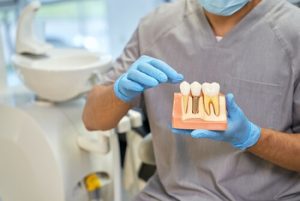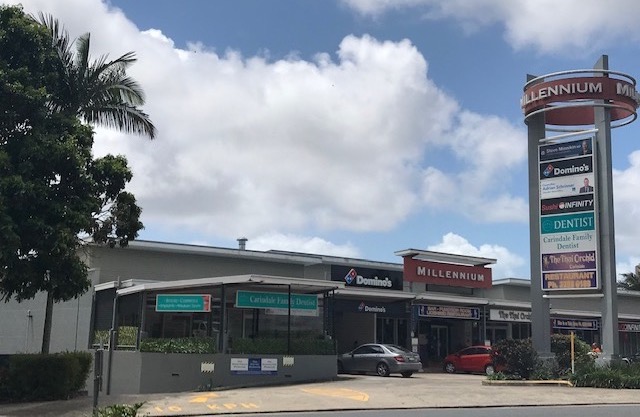Dental implants have gained popularity worldwide as a reliable solution for replacing missing teeth, and many people look for budget-friendly dental implants. Philippines often attracts patients seeking lower costs, but Australia offers both affordability and superior quality and care for your dental implant journey. However, the affordable dental implant cost in Australia and significant benefits make it a compelling choice for your dental implant journey. In this comprehensive guide, we’ll explore why getting dental implants in Australia offers a superior experience compared to the Philippines, ensuring you make an informed decision.
What Are Dental Implants? Understanding the Basics
Dental implants are manufactured tooth roots surgically inserted into the jawbone to provide support for a replacement tooth or bridge. They offer a reliable and lasting solution for missing teeth, providing strength, stability, and a natural look. Unlike dentures, dental implants offer a permanent and more comfortable alternative.
The Allure of Affordable Dental Implants Overseas
 Dental implants have emerged as a groundbreaking advancement in modern dentistry, providing a reliable and aesthetically pleasing solution for those with missing teeth. The allure of affordable dental implants overseas is undeniable, especially for those looking to save on what can be a costly procedure. Many countries offer dental implant treatments at a fraction of the price compared to local clinics, making it an attractive option for budget-conscious individuals. This affordability often comes with the added bonus of combining the treatment with a vacation, allowing patients to enjoy a change of scenery while addressing their dental needs. However, while the lower price tag is tempting, it’s essential to weigh the potential risks and hidden costs associated with seeking treatment abroad.
Dental implants have emerged as a groundbreaking advancement in modern dentistry, providing a reliable and aesthetically pleasing solution for those with missing teeth. The allure of affordable dental implants overseas is undeniable, especially for those looking to save on what can be a costly procedure. Many countries offer dental implant treatments at a fraction of the price compared to local clinics, making it an attractive option for budget-conscious individuals. This affordability often comes with the added bonus of combining the treatment with a vacation, allowing patients to enjoy a change of scenery while addressing their dental needs. However, while the lower price tag is tempting, it’s essential to weigh the potential risks and hidden costs associated with seeking treatment abroad.
Why Are People Considering Dental Implants in the Philippines?
Combining a tropical holiday with dental treatment sounds appealing, and this is what dental tourism in the Philippines offers. Dental implant costs in the Philippines are often lower than in Australia, attracting patients seeking affordable dental implant treatment. But does the lower cost of dental implants equate to better value? Let’s explore this further.
The Hidden Risks and Costs of Getting Dental Implants in the Philippines
While the starting price of dental implants in the Philippines may seem enticing, several hidden risks and costs might make this option less attractive in the long run:
Unregulated Quality and Safety Standards: The quality of dental implant procedures can vary widely between clinics in the Philippines. There’s no guarantee that the dental professional performing your surgery will adhere to the same high standards expected in Australia. This lack of regulation can result in complications, improper implant placement, or even implant failure.
Limited Follow-Up Care: Dental implant surgery is not a one-time procedure. Multiple follow-up visits are required to monitor healing and ensure implant success. If complications arise once you return home, you may face the hassle and expense of flying back to the Philippines for corrective treatment, significantly adding to your overall costs.
Language and Communication Barriers: Clear communication between you and your dental professional is crucial for the success of your dental implant journey. Misunderstandings due to language differences could lead to errors in treatment planning, surgical procedures, or follow-up care, increasing the risk of complications.
Potential Need for Emergency Care: If you experience issues such as infection, implant failure, or severe pain post-surgery, accessing immediate and reliable dental care might be challenging if you’re back in your home country. This increases your stress levels and may result in additional emergency costs.
Travel and Accommodation Expenses: While the procedure itself may be cheaper, you need to factor in travel expenses, accommodation, meals, and other associated costs for the duration of your treatment. If multiple trips are needed, these expenses can add up quickly, making the overall cost much closer to what you would pay in Australia.
Possible Incompatibility with Australian Standards: Some materials or techniques used in the Philippines may not be compatible with Australian dental standards, leading to complications if you require follow-up care from a local Australian dentist. This can result in adding extra expenses to correct or adjust overseas work.
The Risk of Infections or Complications: Surgical or invasive procedures, like dental implants, carries risks, and the likelihood of post-operative infections or complications is higher if the clinic doesn’t adhere to stringent sterilisation protocols. Unfortunately, many overseas dental treatments may not maintain the same hygiene and safety standards as those required in Australian clinics.
The Benefits of Choosing Dental Implants in Australia: Quality That Justifies the Investment
Australia offers a wealth of advantages when it comes to dental implants, ensuring you receive the best care possible. Here’s why choosing Australian dental clinics is a smarter and safer investment:
Highly Qualified and Experienced Dental Professionals: Australian dentists undergo rigorous training and are certified by the Australian Dental Association (ADA), ensuring they meet the highest standards in implant dentistry. Their expertise means you are less likely to experience complications or implant failure, and you can trust that your treatment is in trusted hands.
Advanced Technology and Equipment: Australian dental clinics are equipped with state-of-the-art technology, from digital imaging to guided implant placement techniques. This cutting-edge technology enables dental implant procedures to be performed with greater precision and efficiency, minimising the risk of complications and promoting the healing process.
Strict Safety and Hygiene Standards: Australian dental practices stick to stringent safety protocols, ensuring that all surgical sites, equipment, and materials are thoroughly sterilised. This remarkably reduces the risk of infection or complications during and after your dental implant surgery.
Comprehensive Treatment Planning and Follow-Up Care: From the initial consultation to the final restoration, your dental implant journey in Australia is meticulously planned, with ongoing support at every stage. Regular follow-up appointments ensure that your implant is healing properly and any issues are addressed promptly.
High-Quality Materials and Long-Term Durability: Australian dental clinics use premium quality materials for implant posts, crowns, and abutments, ensuring your dental implant is strong, durable, and long-lasting. This means your dental implant will look and function just like a natural tooth for many years to come.
Customised Care for Each Patient: In Australia, every dental implant procedure is personalised to meet your unique needs. Your dentist will take into account your oral health, gum tissue, and bone density to create a personalised treatment plan that ensures the best possible outcome.
Guaranteed Compliance with Australian Standards: By undergoing treatment in Australia, you’re protected by Australian health regulations, consumer protection laws, and dental industry standards. This gives you peace of mind, knowing that your treatment is backed by a system designed to protect your health and well-being.
Dental Implant Costs: Australia vs. The Philippines
 When it comes to dental implants cost, the Philippines offers a starting price for dental implants of around 1,200 AUD. In contrast, Australia has a starting price of 3,000 AUD per implant. However, this higher cost includes access to highly qualified dental professionals, advanced technology, comprehensive aftercare, and a treatment journey that prioritises your health and safety.
When it comes to dental implants cost, the Philippines offers a starting price for dental implants of around 1,200 AUD. In contrast, Australia has a starting price of 3,000 AUD per implant. However, this higher cost includes access to highly qualified dental professionals, advanced technology, comprehensive aftercare, and a treatment journey that prioritises your health and safety.
Dental Implants: A Confident and Radiant Smile That’s Worth It
Dental implants in Australia offer unmatched quality, safety, and long-term value. While the initial cost may be higher than dental implant procedures in the Philippines, the investment in your oral health, comfort, and peace of mind is invaluable.
The Dental Implants Procedure: A Brief Overview
The dental implant procedure is a reliable way to replace missing teeth, involving several key stages to ensure the implant integrates with your jawbone. Here’s a concise breakdown:
Initial Consultation and Planning
Your implant journey begins with a detailed examination, including X-rays and scans, to assess your jawbone and gum health. A customised treatment plan is then created to outline the procedure and any additional steps, like bone grafting if needed.
Preparatory Procedures (If Needed)
If your jawbone lacks sufficient density, bone grafting might be performed to strengthen it. This ensures a stable foundation for the implant.
Implant Placement Surgery
Under local anaesthesia, the dentist places the titanium implant post into your jawbone, acting as an artificial tooth root. The gum is then sutured, and a healing cap is placed over the implant.
Healing and Osseointegration
Over the next 3 to 6 months, your jawbone fuses with the implant in a process called osseointegration, which is crucial for the implant’s stability. Follow-up visits monitor this healing.
Abutment Placement
Once healing is complete, a minor surgery exposes the implant, and an abutment (a connector piece) is attached to support the crown.
Crown Placement
A custom-made crown, designed to match your natural teeth, is attached to the abutment, completing the procedure.
Frequently Asked Questions
Q: Is the dental implant procedure painful?
No, it’s performed under anaesthesia, though some discomfort may follow during healing.
Q: How long does the process take?
It typically takes 3 to 9 months, depending on healing time and any preparatory procedures.
Q: Can I eat normally afterwards?
Soft foods are recommended initially, but you can resume your normal diet once fully healed.
Q: How do I care for my implant?
Maintain good oral hygiene and attend regular dental check-ups to ensure its longevity.
Q: Are dental implants in the Philippines safe?
A: While many dental clinics in the Philippines offer affordable dental implants, the quality and safety standards may not be as stringent as in Australia. The invasive procedure carries risks, and it’s essential to choose an experienced implant dentist.
Q: How much does a single dental implant cost in Australia compared to the Philippines?
A: In Australia, the starting price for a single dental implant is 3,000 AUD, while in the Philippines, the starting price is around 1,200 AUD. However, the higher cost in Australia ensures top-quality care, materials, and experienced dentists.
Q: How long does the dental implant procedure take in Australia compared to the Philippines?
A: In Australia, the dental implant process typically takes several months, including the healing period. This timeline ensures a comprehensive treatment plan with multiple follow-up visits. In the Philippines, the procedure may be faster, but the quality of aftercare and monitoring might not be as thorough, which could compromise the implant’s longevity.
Q: Are bone grafting procedures included in the dental implant cost in Australia?
A: The need for bone grafting depends on your jawbone’s density and health. In Australia, the initial consultation will assess this, and if required, bone grafting is performed with top-quality materials by an experienced implant dentist. The cost may be an additional fee but is clearly outlined, ensuring no unexpected expenses later on.
Q: What kind of materials are used for dental implants in Australia versus the Philippines?
A: Australian dental clinics use high-quality, durable materials like titanium for the implant post and porcelain or ceramic for the crown. These materials are biocompatible and designed to last a lifetime. The quality of materials used in the Philippines can vary, and cheaper materials may be used to cut costs, which can affect the implant’s longevity and success.
Q: Is dental implant surgery in Australia more comfortable than in the Philippines?
A: Yes, Australian dental clinics prioritise patient comfort, using advanced techniques and sedation options to minimise discomfort during the procedure. They also offer a thorough pain management plan for post-surgery recovery. While clinics in the Philippines may offer similar procedures, the emphasis on patient comfort and advanced sedation methods may not be as consistent.
Q: Can I use my health insurance for dental implants in Australia?
A: Many health insurance plans in Australia offer coverage for dental implants, especially if you have extra coverage that includes major dental procedures. It’s advisable to check with your insurance provider for specific details. In contrast, dental treatments in the Philippines typically need to be paid out-of-pocket, as international clinics are rarely covered by Australian health insurance policies.
Q: How do I ensure my dental implants will last long-term?
A: In Australia, the focus is on comprehensive oral care, including regular check-ups, proper oral hygiene guidance, and follow-up appointments to monitor your implant’s health. This approach helps ensure your dental implants provide a long-lasting, natural solution. Such comprehensive aftercare might not be available if you opt for treatment in the Philippines.
Q: Can I get multiple dental implants done in one visit in Australia?
A: Yes, experienced dentists in Australia can perform multiple implant placements in a single visit if your oral health and bone structure allow it. This can be discussed during your initial consultation, and a customised treatment plan will be developed. This approach ensures that all implants are placed correctly and that your recovery is carefully monitored.
Q: How do Australian clinics handle complex cases compared to those in the Philippines?
A: Australian clinics have the expertise and technology to handle complex cases, such as patients with insufficient bone density, multiple missing teeth, or pre-existing gum disease. Their thorough treatment planning and access to advanced equipment make them well-equipped to manage challenging dental implant procedures, ensuring optimal results.
Choose Quality Dental Care in Australia
 Choosing to undergo dental implant treatment in Australia means prioritising your oral health, safety, and long-term satisfaction. The benefits of receiving dental implants from experienced professionals using advanced technology far outweigh the lure of cheaper overseas dental implants. If you’re seeking dental implants that offer a confident and radiant smile with a guaranteed high level of care, Australia is the clear winner.
Choosing to undergo dental implant treatment in Australia means prioritising your oral health, safety, and long-term satisfaction. The benefits of receiving dental implants from experienced professionals using advanced technology far outweigh the lure of cheaper overseas dental implants. If you’re seeking dental implants that offer a confident and radiant smile with a guaranteed high level of care, Australia is the clear winner.
Take the next step in your dental implant journey with confidence—choose Australian dental clinics for quality dental care that lasts a lifetime. For more information or to book a consultation, contact us at Carindale Family Dentist:
Millennium Centre : (07) 3324 9172
Note: Any surgical or invasive procedure carries risks. Before proceeding, you should seek a second opinion from an appropriately qualified health practitioner.
References:
Australian Dental Association (ADA). (n.d.). Dental Practice. Retrieved from https://ada.org.au/about/policies/dental-practice#:~:text=The%20ADA%20believes%20dentistry%20should,provided%20to%20those%20in%20need.
Colgate. (n.d.). What Is Dental Tourism? Retrieved from https://www.colgate.com/en-us/oral-health/threats-to-dental-health/what-is-dental-tourism
Medium. (n.d.). The True Cost of Dental Tourism: Hidden Expenses and Long-Term Consequences. Retrieved from https://medium.com/@minfo/the-true-cost-of-dental-tourism-hidden-expenses-and-long-term-consequences-d8cd38c8dd52
Cleveland Clinic. (n.d.). Dental Implants. Retrieved from https://my.clevelandclinic.org/health/treatments/10903-dental-implants
Karliner, L. S., Jacobs, E. A., Chen, A. H., & Mutha, S. (2007). Implications of Language Barriers for Healthcare: A Systematic Review. Journal of General Internal Medicine, 22(Suppl 2), 1-8. https://doi.org/10.1007/s11606-007-0366-4
ScienceDirect. (n.d.). Osseointegration. Retrieved from https://www.sciencedirect.com/topics/medicine-and-dentistry/osseointegration#:~:text=Osseointegration%2C%20defined%20as%20a%20direct,success%20of%20endosseous%20dental%20implants



